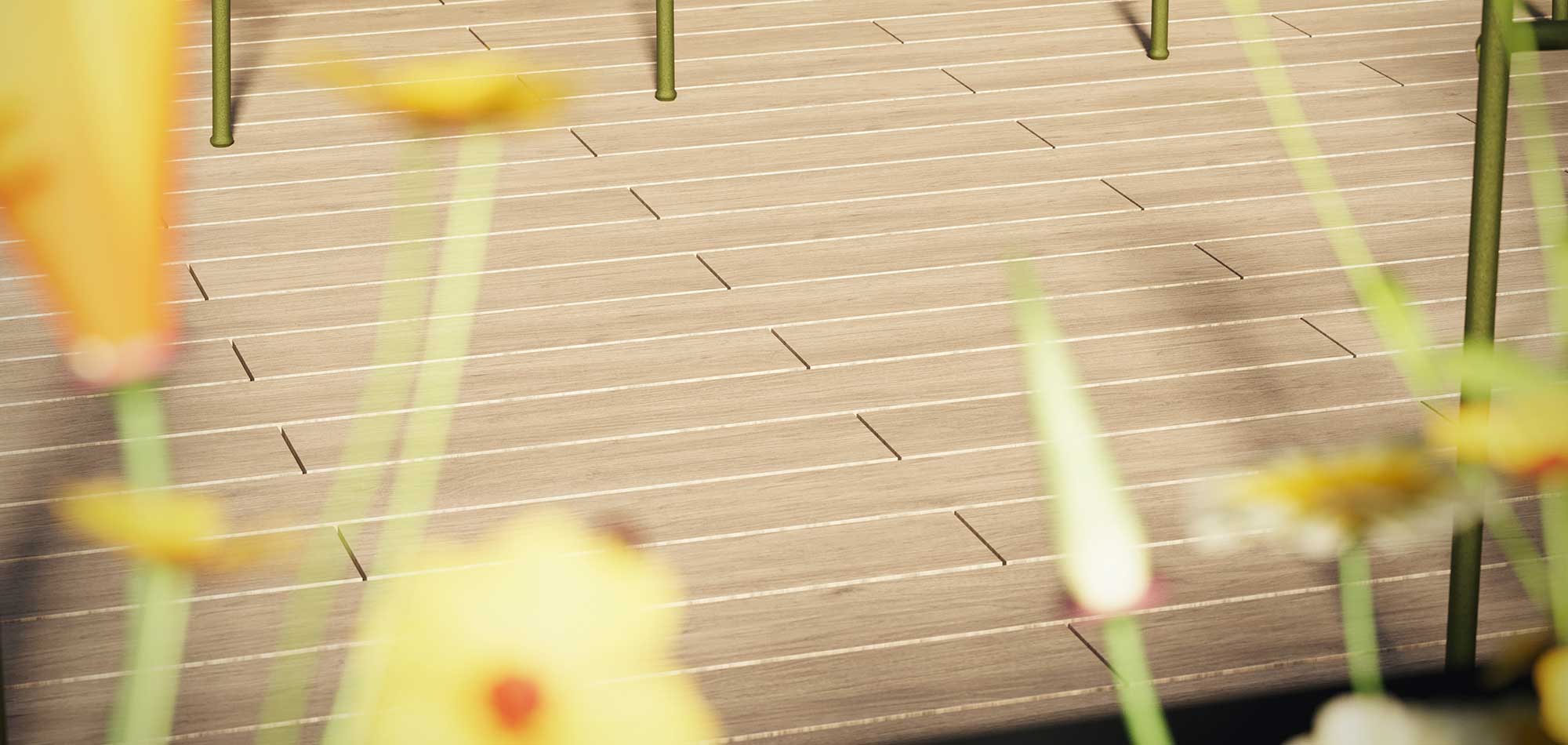If you have one eye on the RYNO news feed, you may have noticed that we recently unveiled our new RYNO® Vitrified Composite® Decking solution. Finished with a strikingly realistic hardwood effect, the boards represent a significant leap forward in decking technology and benefit from several impressive and unique characteristics.
As a relatively new decking material, many specifiers, architects and construction professionals, have questions regarding vitrified composite’s manufacture, performance and usage. To demystify our latest product and explore the advantages of Vitrified Composite decking over alternative materials, we created this practical guide. From the meaning of ‘vitrified’ to what it is like working with the material, we cover a wide range of topics and answer some of your most frequently asked questions.
What is vitrified composite decking?
Vitrified Composite decking is a unique and innovative combination of technologies and techniques. While composite refers to products made from several materials, vitrification is the process of transforming a material into a glass or glass-like material through rapid heating and cooling.
Vitrified Composite decking incorporates both of these terms. It is a composite because it is manufactured from clay and feldspar. It is vitrified because these materials go through a firing process that alters their chemical bonds and changes their properties.
The result is a decking solution that benefits from a remarkably realistic wood-like finish and an array of performance-related properties that ensure the material better meets the needs of specifiers and architects in particular.
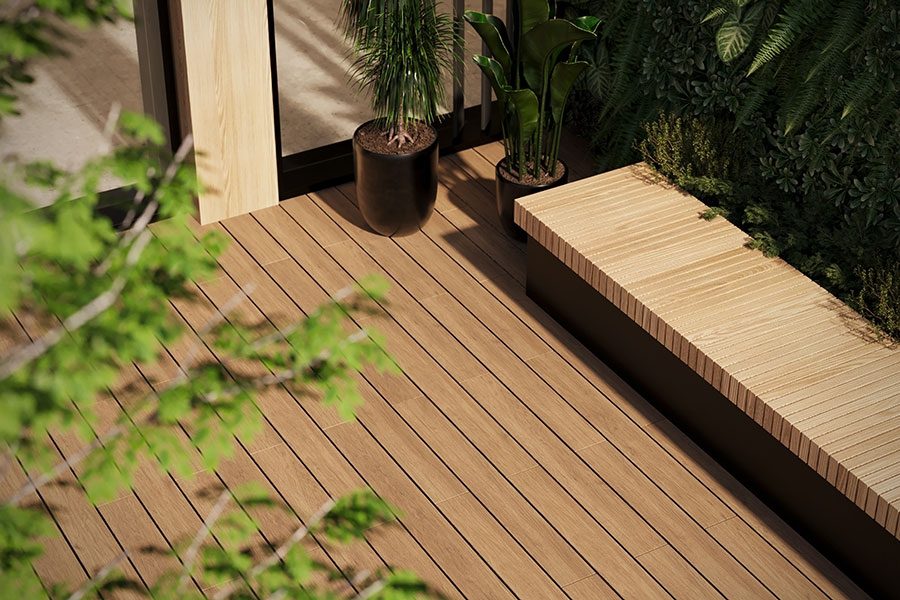
How does vitrification work?
Historically, vitrification is most associated with ceramics. In this field, it is the process of heating the clay into a liquid state and then rapidly cooling it. This turns some of the clay into glass and changes the material properties. For instance, vitrification typically results in a material that is less porous and benefits from improved water resistance.
A similar process occurs when our Vitrified Composite product is manufactured. With decking, which is regularly exposed to the elements and needs to be durable and long-lasting, it’s clear why qualities like improved water resistance are desirable.
How are vitrified composite decking boards manufactured?
During the vitrification process, fundamental changes occur in a material’s chemistry. So far, we have referred to the products of vitrification as ‘glass or glass-like materials’. A more scientific definition would be non-crystalline amorphous solids.
These non-crystalline amorphous solids have a higher percentage of glassy chemical bonds than their constituent materials, making them stronger and less porous in the process.
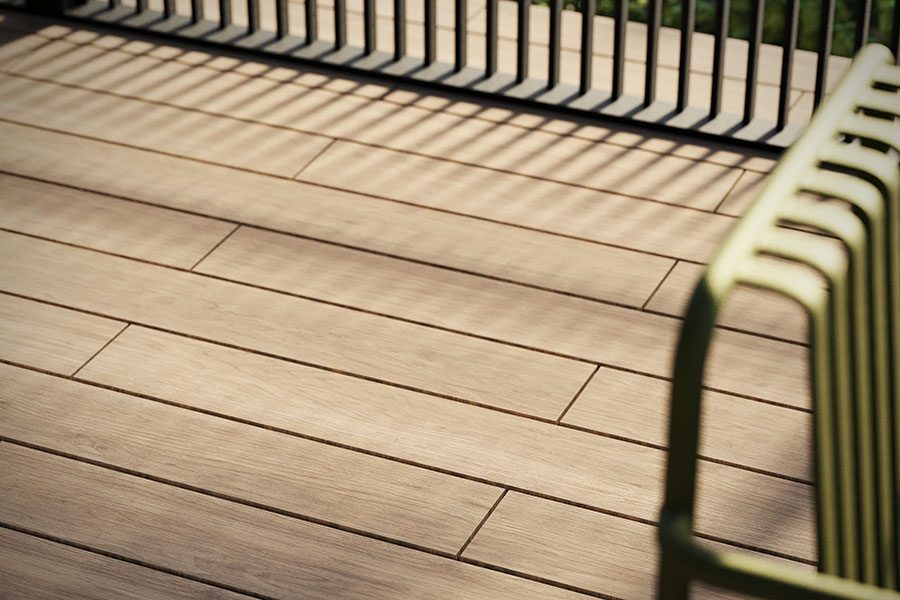
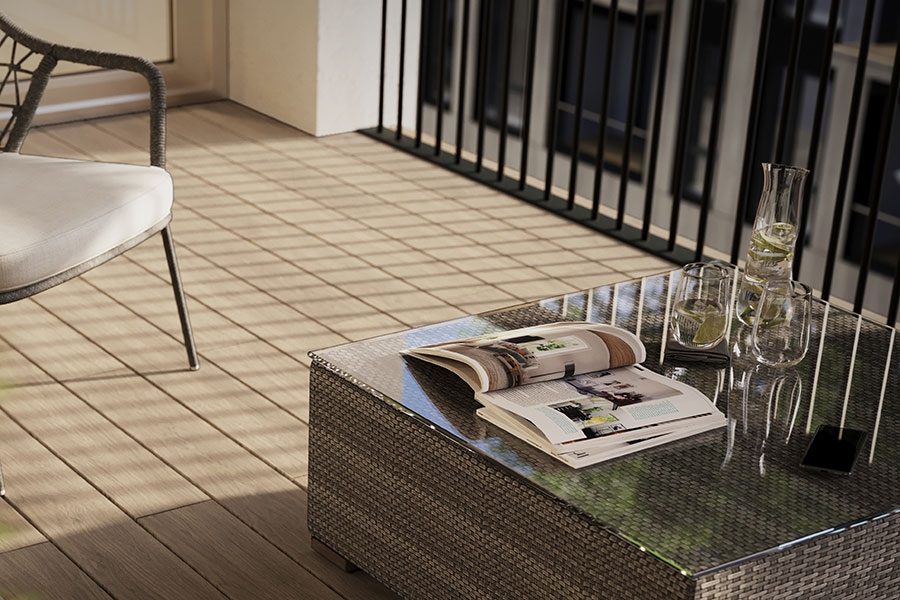
Vitrified Composite decking: a fireproof material
Our Vitrified Composite® Decking solution is also fireproof, making it ideal for use in remediation and construction projects that fall under the purview of The Fire Safety (England) Regulations 2022.
RYNO Vitrified Composite Decking has achieved an A1 Fire Rating, meaning it is non-combustible and suitable for use on the exterior of residential buildings.
Other advantages of vitrified composite decking
Besides excellent water and fire resistance, RYNO Vitrified Composite Decking benefits from a range of other qualities.
Durable
Traditional composite decking is renowned for its durability. It is one of the most robust, long-lasting decking materials available. RYNO Vitrified Composite Decking takes that to the next level, enhancing an already durable design by improving the material’s water resistance, making it frost-resistant and protecting it from staining and fading.Low maintenance
Our Vitrified Composite Decking solution requires minimal maintenance work, particularly when compared to timber decking that demands regular reapplication of protective coatings. Keeping the surface clean and removing unwanted debris and mess, such as pebbles and plant life, will ensure the pristine finish lasts longer. But that is all the maintenance it needs.Slip-resistant
We recognise that safe flooring is paramount. Whether the decking is installed in a high-traffic environment or a private residence, good slip resistance prevents nasty accidents and ensures users are more confident and comfortable with the surface. RYNO Vitrified Composite Decking scored a ≥ 36 PTV value, so is classified as ‘low slip risk’.Aesthetic appeal
Finally, our Vitrified Composite Decking benefits from a beautifully realistic hardwood finish that looks spectacular on a diverse array of terrace and balcony designs. It is available in five distinct finishes – Brazilian Walnut, Himalayan Birch, African Greywood, Sunbleached Oak and White Poplar – ensuring a perfect match with the surrounding environment.
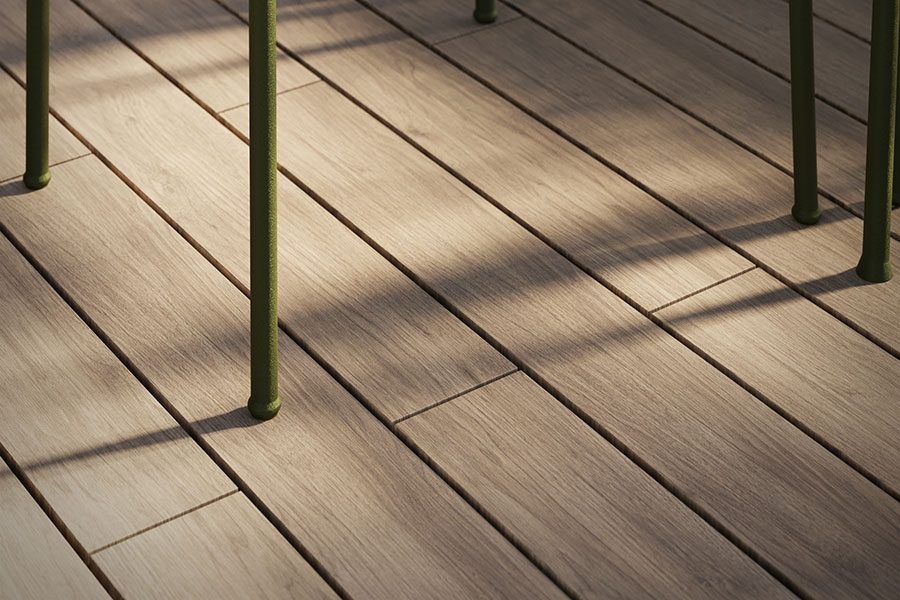
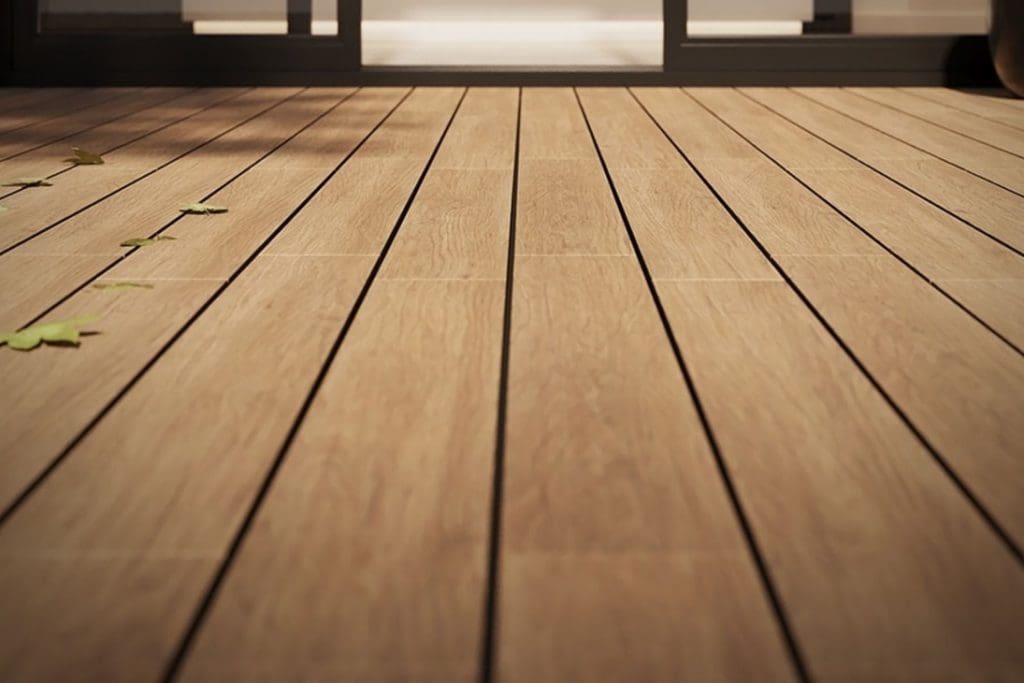
When to consider another decking material?
Vitrified Composite Decking is a striking and stylish material with unique performance properties. However, there may be some instances in which you might want to consider alternative materials. For instance, RYNO TerraSmart® Aluminium Decking is an excellent alternative if you require a lower-cost material for large-scale, high-rise remediation, new build and refurbishment projects.
Working with vitrified composite decking.
As with all our innovative decking materials and systems, RYNO has worked hard to ensure our TerraSmart® Vitrified Composite® system is easy to work with and benefits from fantastic versatility and adaptability. Our systems enable specifiers and architects to realise their design visions. As such, they are highly customisable and compatible with several adjustable installation products, including our non-combustible joist pedestals and low-height support cleats.
RYNO – Pioneers of Vitrified Composite® decking
RYNO Vitrified Composite Decking is a one-of-a-kind solution that delivers a uniquely realistic hardwood finish and combines it with the performance qualities associated with porcelain materials. Beautiful, durable and non-combustible, it enables specifiers and architects to embrace the aesthetic qualities of traditional hardwood while also benefiting from enhanced slip-resistance, water resistance and longevity.
To learn more about RYNO Vitrified Composite Decking, check out our dedicated product page or contact the experienced RYNO team. We are happy to answer any questions you have and discuss how our Vitrified Composite solution can benefit your project.
